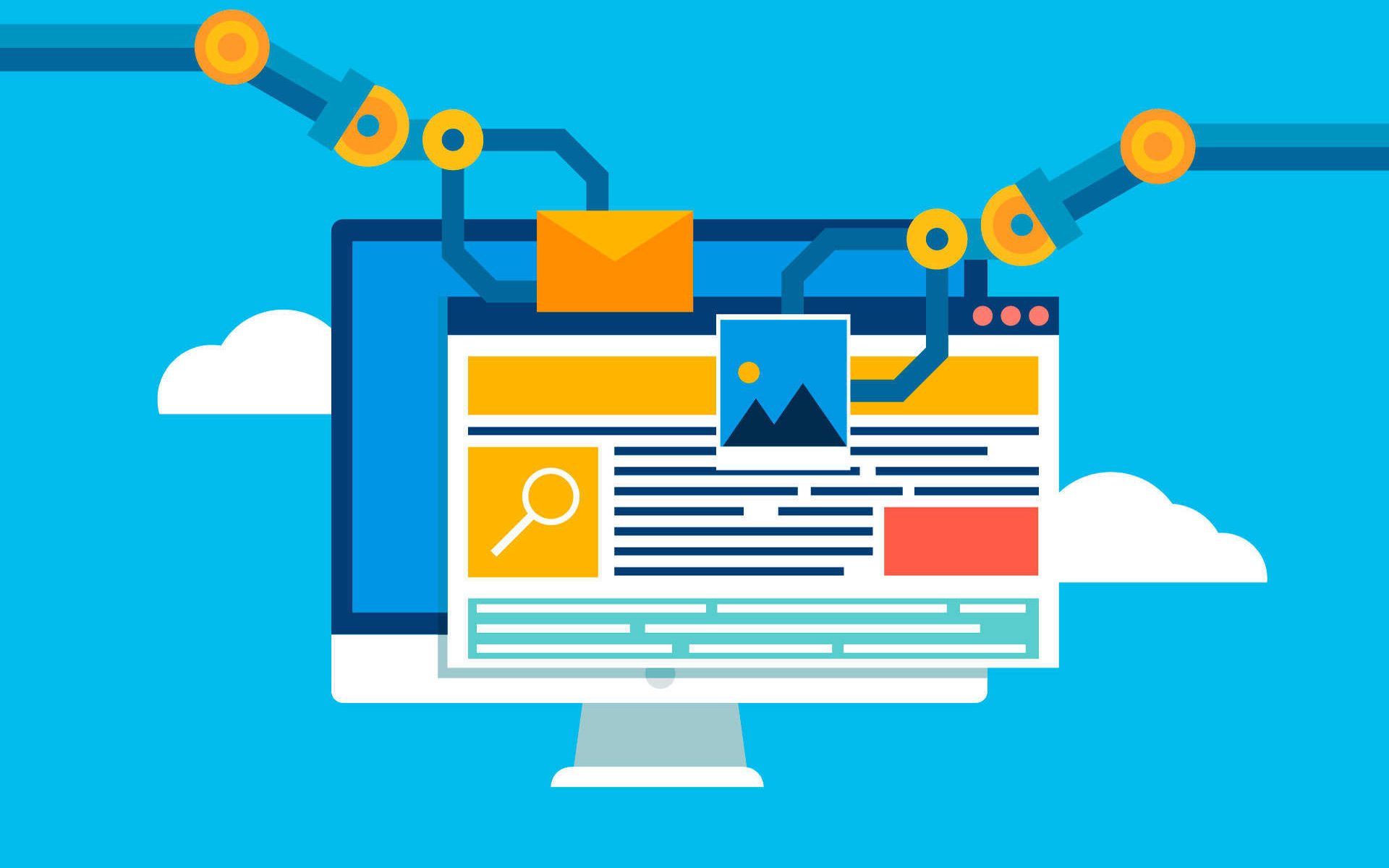Whether you agree or not, Artificial Intelligence, Big Data, IoT, and Machine Learning have rendered traditional enterprises obsolete. Today’s continuously changing customer needs are requiring businesses to adapt, adopt, and invent tactics that allow them to target offers to a select group of customers rather than blasting a shotgun of offers at an uninterested mass. Some of this marketing accuracy, however, does not come easily unless it is backed by a powerful processing capacity.
Cloud has been identified as a prominent disruptor for businesses looking to supplement insight and perspective innovation to accelerate digitalization and preserve a competitive advantage. Cloud computing is a key enabler of corporate flexibility, automation, and reducing costs.
As per Markets and the worldwide cloud computing industry is predicted to rise at a compound annual growth rate (CAGR) of 16.3 per cent from USD 445.3 billion in 2021 to USD 947.3 billion by 2026, with a CAGR of 16.3 per cent.
Why is cloud computing so important for digitalization?
Cloud computing is the use of distant systems across a network. These servers could perform functions such as storage, processing, protection, and analytics, among others. For digital disruption to occur, a company must upgrade its traditional business requirements by utilizing technologies such as AI, IoT, Chatbots, AR, ML, and so on. Such techniques require a lot of computer power, storage, and IT infrastructure to run smoothly. Cloud computing enables these services depending on an organization’s specific needs.
The cloud encourages creativity by:
- Provides developers with a collection of APIs that are interoperable.
- Enterprise data could be reused by businesses.
- Low-code platforms that are simple to use and scale.
- Offers a solid technical foundation for advanced analytics platforms.
- Offers Big Data repositories for huge data collecting.
- Provides a comprehensive privacy and security architecture.
As per Gartner, the cloud would account for more than 45 per cent of IT expenditure on a network system, application software, infrastructure software, and commercial procedure outsourcing by 2024. Much more tempting, according to Gartner, more than 55 per cent of large enterprises would adopt a cloud-only approach by 2025. To keep competitive and grow in a competitive ecosystem, digital transformation necessitates the development of fresh marketing strategies. To maintain a competitive edge, businesses should constantly develop, and the cloud is the catalyst for this. Scalability, cost and labour efficiency, elasticity, and agility are all required as firms begin to adapt their procedures to a digital world.
Here’s how the cloud can help you with your digital transformation.
Agility
Companies must continue to innovate their marketing strategies to maintain market share and strategic advantage. Cloud computing provides the necessary infrastructure, platforms, and computing capabilities to help businesses remain nimble and change-ready.
Operational Costs Have Been Reduced
The cloud provides a scalable service paradigm in which businesses just pay for the resources they utilize. It allows you to expand resources based on your needs, saving you money on IT infrastructure purchases and management. Above everything, cloud servers reduce the requirement for IT support personnel and frequent server refreshes.
Security
Moving data to the cloud provides several benefits, including improved security against risks like data breaches, disasters, and system failure. You could make as many backups as you like.
Efficiency
Cloud computing allows for peak effectiveness at the lowest cost possible. It provides agility and flexibility by supplying the necessary systems and infrastructure without the need to spend in separate IT infrastructure. This allows businesses to respond swiftly to client requirements, avoiding IT system compromise or over-provisioning.
Scalability
Another benefit of cloud computing is scalability, which allows businesses to use services and bandwidth as needed at any given time. And businesses could only charge for this power if they choose to use it. Flexibility in terms of lowering or expanding resources as needed. Overall else, businesses are always aware of their utilization situation.
Collaboration Enhancement
Technology supports effective collaboration and increased performance by allowing organizations to view, retrieve, and interpret data from any location at any time. Furthermore, cloud video communication makes it a lot simpler for organizations to observe, organize, and arrange meetings because they can do it immediately on the system.
Prototyping in a shorter amount of time
The cycle that businesses undertake to drive digitalization involves ideating, developing, evaluating, and implementing. With no requirement for complex services and equipment, the cloud allows for the successful performance of this overall procedure. As a result, while experimenting, an organization could evaluate and launch many applications on various platforms.
The majority of businesses throughout all verticals have adopted an incremental algorithm to cloud migration, with data analytics at the forefront.
Banks and Financial Services: Handling client involvement throughout the client journey, as well as business-specific use instances such as credit supply, client action recognition, investment management, debt settlement, and collections.
Insurance Sector: From client onboarding through complaints and policy enforcement, AI-driven screening, and price and reserve, the insurance industry is implementing AI-driven commercial procedures.
Manufacturing Sector: AI/ML capabilities are being applied not just to distribution network efficiency and sales forecasting, and also to future product forecasts using approaches such as suggestion systems and marketing – mix analyses.
Energy & Utility: Companies are migrating meter readers, defect detection, and advanced predictive business instances to the cloud in the energy and utility industries.
Public Sector: Government agencies have previously implemented AI and statistics in the cloud to manage consumer complaints and sentiment classification, as well as to improve visibility in government operations through the use of broad dashboards and monitoring abilities.
Businesses are exploiting continual improvements in the domains of data science mixed with the level of agility and flexibility of transferring applications to the cloud to establish an API-based consumption ecology, as evidenced by the variety of applications.
This agility also comes with it a slew of questions about the moral and societal ramifications of data usage, as well as how secure data privacy in the cloud is.
Implementing Cloud for Digital Transformation Faces Obstacles
Quality of Service and Data Security
When data is moved to the cloud, more protection precautions are required. The cloud service operator is in charge of the customer’s data security measures, and there is a risk of important data being exposed to cyberattack. Another issue is that cloud services are of poor quality. Ensuring information security and enabling proper analysis through dashboards is a viable method. Performance, scalability, and availability of cloud services are other essential considerations.
Costs and Performance
Higher expenses are generally associated with data-rich and data-driven applications. When large amounts of complex data are exchanged over the network, bandwidth utilization will increase. Businesses must study and create a metering and dynamic charging promise to maintain expenses down. Cloud service providers should be adaptable when it comes to pricing for bespoke services.
Existing System Migration and Integration
Migrating outdated equipment to digital technologies is a massive undertaking. This is possible with the right organizational commitment and sizable budget investment. However, connecting current facilities with the cloud to achieve optimum performance and effectiveness is the real problem.
Governance
Governance guarantees that data and information are being used in conformity with agreement rules and procedures. Businesses must also ensure that IT administration is in line with the company’s overall goals and targets. Cloud-based technologies offer you just a small level of authority over how infrastructure is built and maintained. As a result, strict governance mechanisms are required.
Cloud Computing Is Crucial for Digital Transformation
Business intelligence tools would rapidly use the cloud to promote digitalization throughout businesses in this digital world. The cloud catalyzes this shift and plays an important part. A cloud-enabled and cloud-delivered marketing strategy allows organizations to identify creative ways to offer a greater client service in an era when organization performance is defined by user satisfaction.
While cloud computing has numerous advantages, implementing it is not a simple operation. Using a specialist cloud service provider to help with your cloud migration strategy would make the process go more smoothly.
Conclusion
Companies have reimagined their business structures and consumer approaches as a response to the shift to digital-first. Conventional QA methods and infrastructure must be completely overhauled as part of a successful digital transformation approach.
With qualified in house cloud experts, Winklix helps you offer quick, safe, and seamless cloud migration assurance (CMA) services for mainstream apps. Winklix’s in-depth knowledge of large-scale migration programs enables it to recommend the best testing strategies focused on the migration methodology being used.




